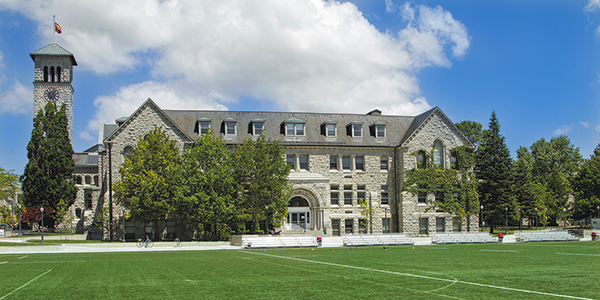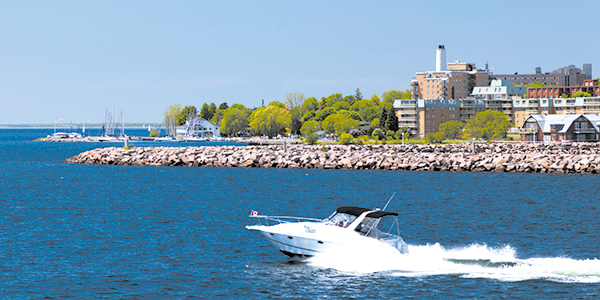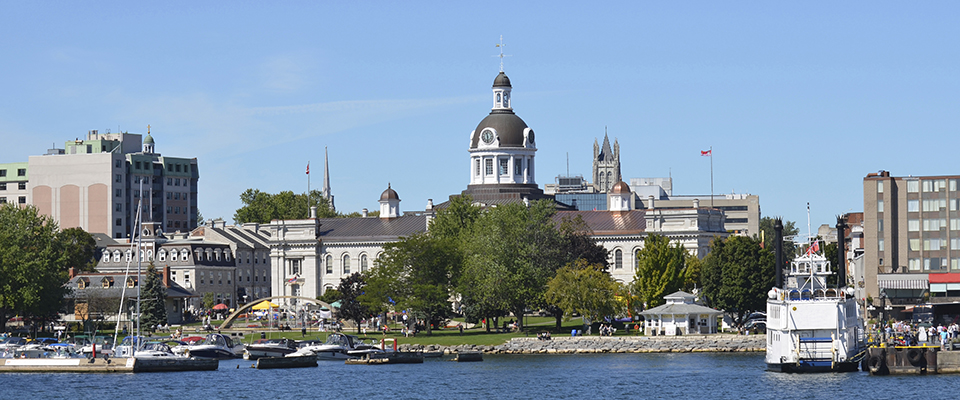Spotlight: Kingston
History lives in Ontario’s Limestone City
Kingston, also known as Canada’s Limestone City, sits in an enviable position. Less than three hours away from Toronto, Ottawa and Montreal, the city also sits on the shores of both the St. Lawrence River and Lake Ontario, as well as on the doorstep of the Thousand Islands. If you’re looking for somewhere central to set up camp and go exploring in Southern Ontario, Kingston couldn’t possibly be any better positioned.
This historic spot is one of the oldest communities in the country, a fact due in no small part to its strategic placement at the confluence of the St. Lawrence River, Cataraqui River and Lake Ontario. This was the one-time capital of the Province of Canada—until Queen Victoria realized it lay perilously close to the American border—and the early stomping grounds of Canada’s first prime minister, Sir John A. Macdonald.
As such, history lives large here, and those who like to disappear into museums and roam historic sites will find no shortage of attractions. Start by diving into the history of Kingston itself, which is buffered with an abundance of centuries-old limestone architecture (hence the Limestone City nickname) and Victorian-era buildings.

Grant and Kingston Hall in Queen’s University in Kingston.
A Formidable Fort
The Fort Henry National Historic Site of Canada is among the city’s absolute must-visit attractions. Established during the War of 1812, the imposing fortification sits on an elevated overlook at the confluence of the Cataraqui and St. Lawrence rivers. Today, both self-guided and professionally guided tours through the old British military outpost are available. The experience is designed to give visitors an impression of 19th-century military life, up to and including teaching some of the younger (and willing) Fort visitors how to march in proper military dress.
From here head to Bellevue House, another National Historic Site of Canada that’s located in the heart of Kingston, near Queen’s University. In the 1840s this lavish, Italianate estate overlooking Lake Ontario was once the home of Sir John A. Macdonald and his family, prior to his meteoric rise to becoming the father of Canadian Confederation. The house is fully restored, back to its 1840s splendor, and staff is adorned in full period costume. Guided tours of the house, gardens and grounds are available daily.
Rounding out the big historic attractions in Kingston is Kingston City Hall. Built between 1841 and 1843, this was supposed to be Canada’s very first capitol building before the capital was moved to Montreal. Today it stands as one of the finest examples of 19th century architecture in the country. Free guided tours are available during the week from May to October, and on weekends in July and August.
History buffs will also want to check out the city’s collection of more than 20 museums, including the Royal Military College of Canada Museum, Canada’s Penitentiary Museum and the Marine Museum of the Great Lakes. While touring the city, keep an eye out for the Martello Towers, built on the city’s waterfront to ward off invasion.
Those travelling with kids can visit the Pump House Steam Museum (where animated steam-powered pumps and model trains will enthrall younger visitors) or the Frontenac County Schools Museum (where life as a grade-school student at the turn of the century is demonstrated with hands-on activities).

Getty Images/iStockphoto
A Thousand Islands
When you’re ready for a break from museums and historic sites, you can savor a taste of the great outdoors at Thousand Islands National Park, just a half hour away to the northeast. This is where the Canadian Shield meets the Adirondack Mountains, a transitional axis known as the Frontenac Arch. The islands serve as steppingstones for wildlife, helping to form one contiguous ecosystem.
The park features campgrounds and cottages for extended visits, as well as picnic areas, boat launches, playgrounds and informative visitors centers. More than 20 islands lie within the Thousand Islands National Park overview itself, making this an idyllic area to explore by kayak or canoe.
Hikers can hit any number of trails, with an abundance of trailheads conveniently located at Mallorytown Landing, Landon Bay and around the Jones Creek area. The larger islands have their own networks of well-marked trails as well.
Fishing and birdwatching are also popular in Thousand Islands National Park. You’ll need a valid fishing license to dip your lure in the water, but the effort is worth it—large stocks of rock bass, largemouth bass, smallmouth bass, yellow perch, pike, walleye and pumpkinseed are ready to bite year-round. Bird-watchers, meanwhile, can look for more the diverse species of avians that inhabit the park.
It’s no coincidence that the city of Kingston has been attracting visitors for so long. Its placement at the confluence of two historic rivers, on the shores of scenic Lake Ontario, near the American border and equal distance from three of the country’s largest cities all add up to picture-perfect centrality.
For More Information






